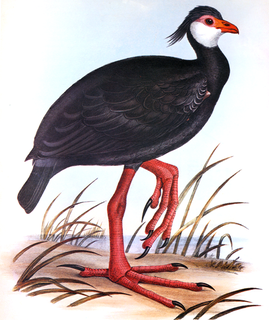Obrimus or Obrimos may refer to:
- Obrimus, possible name for Bromius (son of Aegyptus)
- Obrimos, a faction from the role-playing game Mage: The Awakening
- Obrimus (phasmid), a genus of phasmids in the family Heteropterygidae
Obrimus or Obrimos may refer to:

The Phasmatodea are an order of insects whose members are variously known as stick insects, stick-bugs, walking sticks, stick animals, or bug sticks. They are generally referred to as phasmatodeans, phasmids, or ghost insects. Phasmids in the family Phylliidae are called leaf insects, leaf-bugs, walking leaves, or bug leaves. The group's name is derived from the Ancient Greek φάσμα phasma, meaning an apparition or phantom, referring to their resemblance to vegetation while in fact being animals. Their natural camouflage makes them difficult for predators to detect; still, many species have one of several secondary lines of defense in the form of startle displays, spines or toxic secretions. Stick insects from the genera Phryganistria, Ctenomorpha, and Phobaeticus include the world's longest insects.

George Robert Gray FRS was an English zoologist and author, and head of the ornithological section of the British Museum, now the Natural History Museum, in London for forty-one years. He was the younger brother of the zoologist John Edward Gray and the son of the botanist Samuel Frederick Gray.

James Wood-Mason was an English zoologist. He was the director of the Indian Museum at Calcutta, after John Anderson. He collected marine animals and lepidoptera, but is best known for his work on two other groups of insects, phasmids and mantids.
Acacus can refer to:
Phasmid may refer to:
Pomposa may refer to:

Extatosoma tiaratum, commonly known as the spiny leaf insect, the giant prickly stick insect, Macleay's spectre, or the Australian walking stick, is a large species of Australian stick insect endemic to Australia. The species has the Phasmid Study Group number PSG9.

Diapheromeridae is a family of stick insects. They belong to the superfamily Anareolatae of suborder Verophasmatodea.
The Phasmid Study Group is a group for professional and amateur entomologists who are interested in the order Phasmatodea, i.e. stick and leaf insects, known as "phasmids", as well as other interested persons. Over 40 species of Phasmid have been named after members of the group. The group includes world experts in the study of phasmids worldwide.
C. proximus may refer to:
Lysicles may refer to:

Odontoptila is a monotypic moth genus in the family Geometridae described by Warren in 1897. Its only species, Odontoptila obrimo, was first described by Druce in 1892. It is found in Central and North America.

The Heteropterygidae is a family of stick insects belonging to the suborder Euphasmatodea. Species can be found in Australasia, East and Southeast Asia. More than 130 valid species are descriebed.
Greenia may refer to:

Aretaon is a genus of stick insects native to Borneo and the Philippine island Palawan.

Trachyaretaon is a genus of stick insects native to the Philippines.

Brasidas is a genus that is native to the Philippines and is named after the Spartan general Brasidas

Obrimus is a stick insect genus native to the Philippines. It is type genus for the tribe and the subfamily in which it is listed.